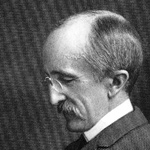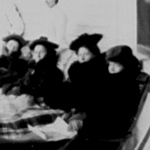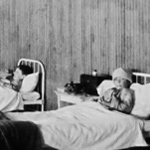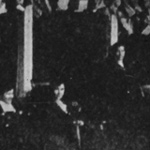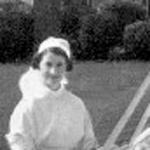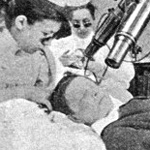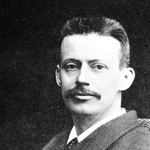Treatment
sanatoria
The idea that climate could improve the health of consumptives, an idea that had been around since the time of the Ancient Greeks and Romans, set the foundation for the creation of sanatoria. After himself being cured by the invigorating air of the Himalayas, Hermann Brehmer established a centre in Prussia in 1854 where consumptives could benefit from exercise in the open air. In the 1870s another German, Peter Dettweiler, opened a sanatorium but ordered his patients to stay still and rest. Yet another philosophy was taken at Dr. Otto Walther’s sanatorium in the Black Forest of Germany; he insisted that overfeeding would build the body’s resistance, and instructed his patients to consume pints of milk, cheese, butter, and fatty meats. Several sanatoria were also established in the Swiss Alps, where it was believed that the altitude and brisk air would bring improved health to the sick. The ideas underlying these sanatoria, namely rest, fresh air, and regulated diet, would influence treatment regimes at sanatoria in North America.
Inspired by such centres, and his own improvement in the Adirondacks, Edward Livingston Trudeau opened the Adirondack Cottage Sanatorium in 1885, the first of its kind in North America. The Cottage San was based on open-air treatment, with six to ten patients living in each cottage, spending much of their day resting outside. Patients followed a rigid schedule of rest, eating, and small labours.
Influenced by the Adirondack Cottage Sanatorium, Mr. W. J. Gage proposed the first institution for consumptives in Canada in 1893; however, the Muskoka Cottage Sanatorium only opened in July 1897. Shortly thereafter, in 1902, the Muskoka Free Hospital for Consumptives was opened to care for patients unable to afford the cost of a dollar-a-day facility. By the First World War the number of sanatoria across Canada had increased to thirty, with 1800 beds, across seven provinces. Ontario alone had twelve sanatoria by 1934:
- Muskoka Cottage San, Gravenhurst, 1897 & Muskoka Hospital for
- Consumptives, 1902
- Royal Ottawa San (prev. Lady Grey Hospital), Ottawa, 1903
- The Mountain San, Hamilton, 1904
- The Toronto Hospital for Consumptives, Weston, 1904
- The Queen Alexandra San, London, 1910
- I.O.D.E Preventorium, Toronto, 1912
- Brant San, Brantford, 1913
- The Essex County San, Sandwich, 1913
- The Freeport San, Kitchener, 1914
- The Niagara Peninsula San, St. Catharine’s, 1928-30
- St. Mary’s on the Lake San, Haileybury, 1932
- East Windsor San, Windsor, n.d
Kingston provided care for TB patients through several institutions over the years. The Sir Oliver Mowat Memorial hospital opened in 1912 as the first sanatorium in Kingston, but it closed in 1925 due to financial problems. Although the Kingston General Hospital ran a tuberculosis ward for many years, Ongwanada opened as a sanatorium in 1944 and operated as such until 1965.
In the early days, typical stays in the sanatoria lasted only three to nine months, but by the 1920s, as society became increasingly concerned with isolating the contagious, stays were often between two to five years.
Life in “the San” was routine. A balance between rest and exercise was sought, but many patients found the hours sitting still tedious and boring. Some tried to liven things up by sneaking out of the San at night or pulling pranks on other patients. For the most part, though, the rules were followed and those “taking the cure” were made to rest upwards of five hours a day.
Rest Hour
The saddest words of which I ken
Were coined for us poor T.B. men,
We hear them time and time again –
“It’s Rest Hour.”
I’m resting twenty hours a day,
I eat my meals and hit the hay
’Till I get sick, when doctors say –
It’s Rest Hour.
And often times I think, with dread,
That maybe someone, when I’m dead,
Will place these words above my head –
It’s Rest Hour.
Edna Grant, 1932
Queen Alexandra Sanatorium, London, Ontario
Rest hours often took place outside, combining fresh air, rest, and heliotherapy treatments. Early sanatoria treatments often had patients sleeping on verandas or in tents to maximize patient exposure to fresh air. Many sanatoria required patients to sunbathe for several hours a day in the belief that the sun would improve their condition.
Though it has been recognized for centuries that exposure to the sun could have health benefits, it was in the 1890s that Niels Ryberg Finsen conducted scientific studies that showed that the suns rays had bactericidal properties and stimulated tissue generation. His findings encouraged doctors to prescribe sun treatments for a variety of diseases, including TB. For those seasons or locations where frequent sunlight was not available, Finsen invented an ultraviolet lamp that could be used to treat skin disorders, including Lupus vulgaris (TB of the skin). Finsen received the Nobel Prize for Medicine in 1903.
Also important was sanatoria’s ability to educate patients on hygiene to stop the spread of TB and to provide occupational training. As sanatoria grew and expanded over the first half of the twentieth century, they added recreational halls, craft rooms, barber shops, libraries, and schools to help make stays more bearable.
Sanatoria began to decline in the 1950s and 1960s after the discovery of several drugs effective against TB.
Explore the picture gallery to learn more about this treatment.
